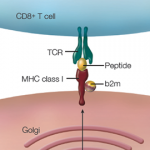‘It is very humbling to realize how much more we need to do for our children with uveitis.’ —Sheila T. Angeles-Han, MD, MSc
Risk Factors
Sheila T. Angeles-Han, MD, MSc, associate professor of pediatrics and pediatric rheumatologist at Cincinnati Children’s Hospital Medical Center, took the stage to describe the risk factors for, and treatment of, pediatric uveitis. “It is very humbling to realize how much more we need to do for our children with uveitis,” she stated.
Dr. Angeles-Han noted the group of children most at risk for uveitis are white females. Severe uveitis, however, is more common in black males. Beyond that, little is known, and ongoing studies are focused on identifying genetic risk factors and biomarkers for the onset of uveitis.
Diagnosis
The diagnosis of uveitis frequently occurs early after a diagnosis of JIA. In fact, the more recent the JIA diagnosis, the higher the risk of developing uveitis, and approximately 50% of patients will develop uveitis in the first year after diagnosis of JIA. This risk of uveitis is one of the reasons early systemic treatment of JIA with methotrexate may, in fact, influence the development of uveitis, Dr. Angeles-Han explained.
Rheumatologists treat uveitis with the goals of achieving sustained remission, preserving vision, and preventing recurrences and new or worsening ocular complications. This should occur with no ocular inflammation and no topical steroids. Instead, uveitis should be treated with corticosteroids (topical, oral) and disease-modifying anti-rheumatic drugs, such as methotrexate, mycophenolate and azathioprine, as well as with biologics.
“There really aren’t any set standardized ways to treat patients with JIA-associated uveitis,” stated Dr. Angeles-Han. Most physicians, she explained, start with methotrexate followed by tumor necrosis factor-α inhibitor (TNFi) therapy. If the patient fails TNFi, then it is possible to escalate the dose, try a different TNFi or start another class of biologic.
Draft 2018 ACR & Arthritis Foundation Guidelines
Some studies have investigated the factors associated with remission and relapse after medication discontinuation.1,2 Although the studies differed by diagnosis, medication and follow-up, they suggested a 43–73% relapse one year after the discontinuation of medication, explained Dr. Angeles-Han.
She also presented the draft 2018 ACR and Arthritis Foundation guideline for the screening, monitoring and treatment of JIA-associated uveitis. The guideline, she noted, was created by rheumatologists and ophthalmologists working together and contains 19 recommendations, including one for ophthalmologic screening of patients with JIA. The guideline emphasizes the importance of screening for uveitis and monitoring eye disease in this patient population.


